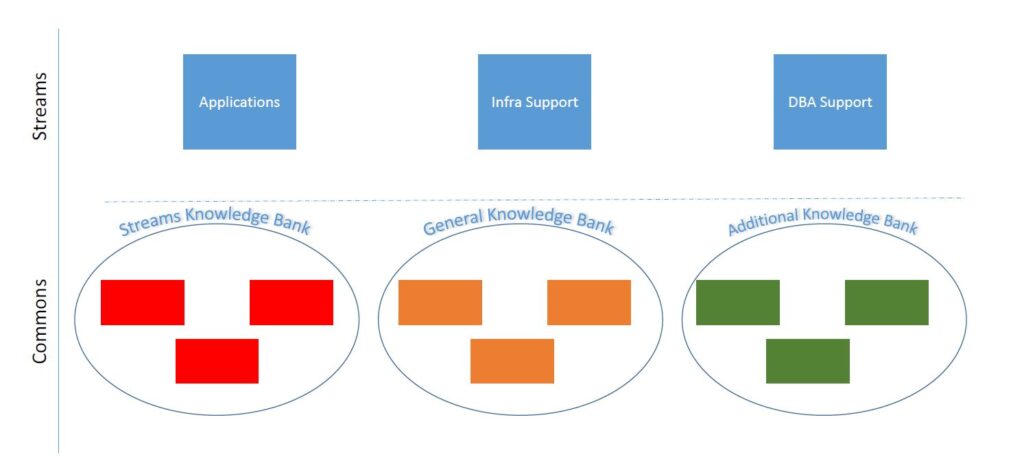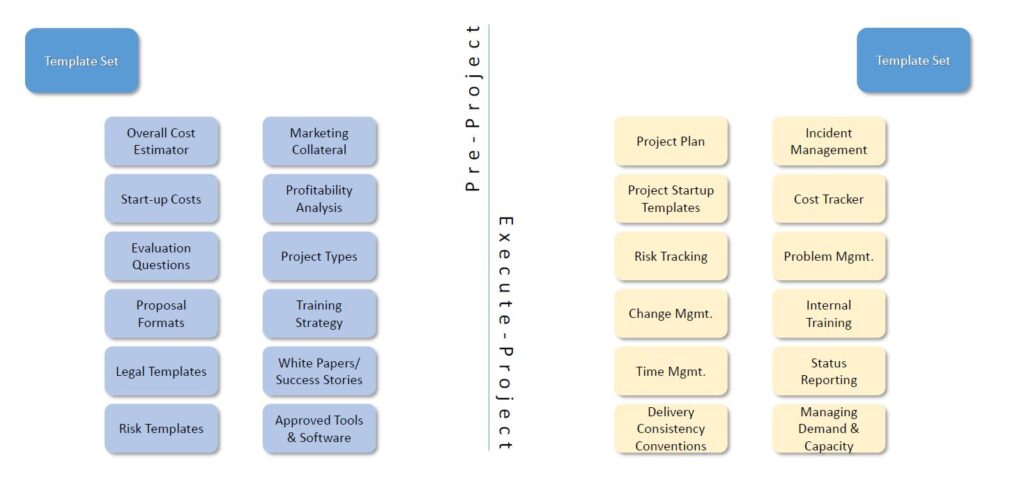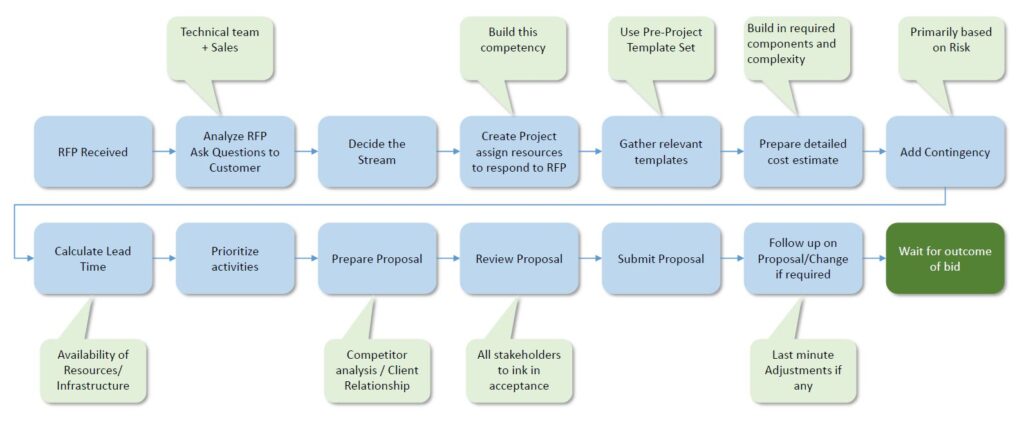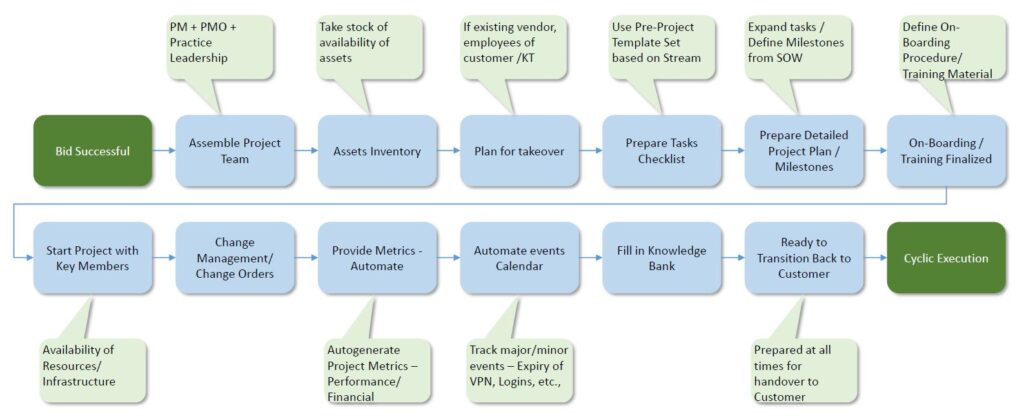
A Guide to understand the flow of Managed Services Project Cycle
Managed Services Project Cycle:Step by step flow
Assemble assets
You organization assembles their assets – mostly digital

In your organization, there typically will be a defined managed services project cycle – which is applicable to your expertise, for example; Applications, Infra and DBA support, the processes and methods that had been defined or available from your previous projects. Once you have gathered that, figure out what are the areas you are planning to implement Managed Services for. The list is quite long, however, based on the requirements of the customer, you may want to understand what are the areas you have bid for and will implement.
Identify the services required for your project

For any project the customer will require a specific set of services, this is also listed in managed services project cycle. List out the services that are being offered to the customer based on the project needs. The above diagram shows that the customer is interested in the ‘ticked’ services. Your actual service list may be more or less.
Assemble the template sets for Pre-Project and Execution

Assemble the template set for the Pre-Project work. It is important to assemble them before starting the project and will serve as your initial checklist and based on the expertise you have. Now, managed services project cycle will have this expanded and added. The second half of the image above are the templates you require for this specific project. These are the templates you will use for Execution of the project. There are several key documents that need to be defined that describe the process, these include Change, Incident and Problem management
Now that you have the templates ready and assembled, you must define the flow for the pre-project work.
Define the pre-project flow

These are the steps to undertake before you actually win the bid. This flow fixes the responsibility of the departments to prepare a winning bid. For most organizations, having the flow help in the smooth preparation of a proposal that meets all the criteria set by the customer which is specified in their RFP (Request for Proposal). Being organized helps in building a competitive proposal in the least amount of time satisfying all the customers requirements. Also remember that for most organization, the chances of winning a bid is 10-20%, so efficiency and time matters.
Execute it!

Hurrah! Your organization has won the bid. Now is the time to execute it. The above diagram is the flow for you to understand what goes on in the actual project execution. Build upon this knowledge by getting to understand each process box, by exploring various templates available and fine tune them over the years with practice and experience. The flow also will make you understand where yours and your co-workers role. As you work on different project you will understand the process boxes better.
Authored by Vijay Chander – All rights Reserved 2022

